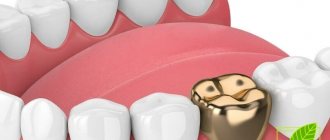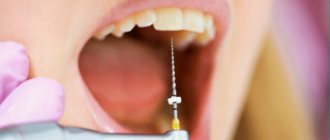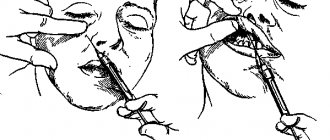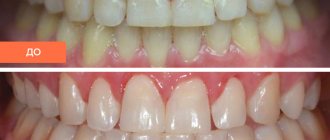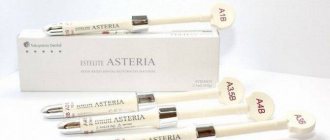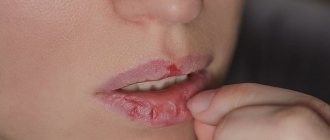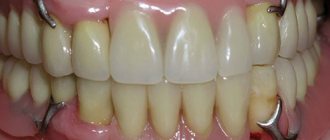Electrophoresis is a type of physiotherapeutic procedure that is used to treat various diseases. During electrophoresis, the human body is exposed to a direct electric current generated by a special apparatus. Using electrophoresis, a medicinal substance is introduced into the body through the skin and mucous membranes. Electrophoresis is prescribed by the attending physician after a thorough examination and exclusion of contraindications. The procedure is performed in a medical facility in compliance with all rules and regulations. There are devices for home use, however, they should also be used after consultation with a doctor and strict adherence to instructions and safety measures. It is better to entrust the performance of physiotherapy to professionals.
At the Yusupov Hospital you can take a full course of electrophoresis in the comfortable conditions of a rehabilitation center. Specialists perform this physical procedure with high quality, which contributes to the patient’s speedy recovery.
What is the treatment procedure?
The main advantage of the electrotherapy method is painlessness and lack of discomfort, which distinguishes it from injections and swallowing tablets. Medicines, transformed into ions, enter the patient’s body through intact skin or mucous membranes under the influence of direct or pulsed current. The effectiveness of treatment is due to the simultaneous influence of two factors on the body: medication and current.
Electric current allows you to speed up metabolic processes in the human body. Administration of drugs through ionotherapy has a number of advantages over delivering them intramuscularly, intravenously or orally:
- creating a long-lasting effect from the administration of the drug due to accumulation in the subcutaneous fatty area and slow consumption;
- no side effects;
- painless delivery of the drug to the desired area of the body;
- no tissue damage during drug administration;
- reducing the dose of the drug.
From a physics point of view, the procedure is the process of decomposition of an electrolyte into ions when it interacts with water (dissolution) or under the influence of high temperatures (melting). In an aqueous solution, the drug breaks down into ions, which, under the influence of current, begin to move and enter the body through the mucous membranes and skin. Then the ions are evenly distributed in the cells and in the intercellular fluid.
The amount of drug absorbed from the solution during electrophoresis depends on many factors. Among them: the patient’s age, the condition of his skin, current density, the amount of substance in the solution, etc.
During the procedure, the patient will not feel discomfort or pain. Electrophoresis is prescribed to both adults and children, as it is absolutely harmless and effective for treating a number of diseases. Another positive point is that drugs administered under the influence of current do not penetrate deeply, but remain in the subcutaneous fat layer, so they have a longer lasting effect on the body.
Numerous studies have shown that the procedure increases the skin's sensitivity to medications, which increases their activity. Electrophoresis is also prescribed for infants. It is better to carry out the procedure at home, since there may be patients in medical institutions.
Device structure
The electrophoresis apparatus is an alternating current rectifier, semiconductor (now), electron tube (formerly). It operates from a standard network with a frequency of 50 Hz and a voltage of 220 V and is equipped with a milliammeter.
Electrophoresis devices operate primarily using galvanic current. It is continuous, low voltage, constant intensity. Always passing in one direction, the current is able to maintain polarity, strength, and voltage. The action is comparable to a blow of wind that does not change its strength. Thanks to this, the electrophoresis device is able to “deliver” drugs deep into the body, affecting the tissues and mucous membranes of the body. For direct current, even dense tissues can be considered permeable.
Indications for electrophoresis
The electrotherapy method is prescribed to newborns from 4 months of age, when there are indications for the procedure. For infants, procedures are necessary in the treatment of hip dysplasia and neurological pathologies. Electrophoresis allows you to deliver medicine to the child’s body without intravenous injections. Often, to increase the effect of treatment, electrophoresis is prescribed along with massage. Both procedures are absolutely painless and do not cause any discomfort to the baby.
Electrophoresis at home is more effective than in a medical institution, since the child does not receive stress. He does not need to be taken to a children's clinic, where there are many sick children. Devices for carrying out the procedure are freely available. Before purchasing equipment for electrophoresis, consult your doctor; he should prescribe special medications that can be used in ion therapy. Electrophoresis, like any treatment method, has contraindications. The local pediatrician must notify them. It is not recommended to perform endonasal electrophoresis at home, as this is a complex procedure that affects the nasal mucosa.
FAQ
Can electrophoresis be used for children?
Galvanization is often used in pediatrics. There is no need to be afraid of this procedure. It does no harm, is non-invasive, absolutely painless. But only a doctor should select the necessary medications, frequency and amplitude of the current.
Is it possible to combine electrophoresis with other procedures - acupuncture, massage, paraffin baths?
Electrophoresis is compatible with many other procedures, such as acupuncture, various therapeutic and cosmetic massages, and paraffin baths. But a complex treatment regimen is developed by a doctor, since between some manipulations it is necessary to take a break from several hours to several days.
Literature:
- ICD-10 (International Classification of Diseases).
- L. O. Neuropathology. - M.: Education, 1982. - P.307-308. Bogolyubov.
- Medical rehabilitation (manual, 3 volumes). // Moscow - Perm. - 1998. Popov S. N.
- Physical rehabilitation. 2005. - P.608.
- State Register of Medicines (GRLS) of the Russian Federation.
Themes
Intervertebral hernia, Spine, Pain, Treatment without surgery Date of publication: 12/23/2020 Date of update: 01/11/2021
Reader rating
Rating: 4.33 / 5 (3)
Ion therapy is effective in treating a number of diseases:
Muscle hypertonicity in newborns . When performing electrophoresis, aminophylline is used. This drug increases blood circulation and promotes the growth of cartilage tissue.
Bronchitis . In case of illness, a procedure with calcium is prescribed. If there is a large amount of sputum, the patient is injected with calcium chloride using a current, and if there is a dry cough, calcium iodide is administered. Electrophoresis supplies the localized site of the disease with a drug that effectively fights the inflammatory process.
Pathologies of the joints and spine: arthrosis and osteochondrosis . The procedure is carried out using an anesthetic - novocaine. During the procedure, the main manipulations occur in the area where severe pain is localized. A gasket soaked in a 0.5% solution of novocaine hydrochloride is placed between the anode and the patient’s body. The standard course of treatment is at least 10 procedures. In case of severe pain, electrophoresis is prescribed 2 times a day for 15-25 minutes.
Skin diseases : melanoma, acne or furunculosis. In these cases, copper is used as a drug, as it has an anti-inflammatory and antitumor effect.
Keloid scars . Only scars at an early stage are treated with electrotherapy. To combat them, procedures with lidase are used. Sometimes this treatment is supplemented with electrophoresis with collagenase, since only with an integrated approach can the scar be reduced in volume or stop its growth.
Gynecological diseases associated with unsuccessful pregnancy. Treatments with zinc are prescribed. They are contraindicated on certain days of the monthly cycle, so they are not recommended without the approval of a gynecologist.
Intervertebral disc herniation . The disease is effectively treated with ionotherapy with Karipazim. This drug softens the hernia, so its effect on the nerve ending weakens and the pain goes away. The procedure will require two pads. Karipazim is applied to the first one and is connected to the positive pole of the device, and a heated 0.9% sodium chloride solution is applied to the second (it is connected to the negative pole of the equipment). The affected joint of the spine should be placed between the pads and current should be passed through it. Treatment of a herniated disc with electrophoresis is a long process. It will take 2-3 courses of 20-30 procedures every 1-2 months.
Increased uterine tone during pregnancy . The procedure is harmless for both the expectant mother and the baby. But if fears still creep in, then it is better to abandon electrophoresis during pregnancy and breastfeeding.
Pathologies of cardiovascular diseases . Calcium electrophoresis is performed.
With the help of electrophoresis, pathologies of the nervous, digestive, and genitourinary systems, sleep disorders, neuroses, migraines, burns, and a number of other diseases can be cured. Sometimes one drug is not enough to completely improve the patient.
Ion therapy cannot be used as an isolated method in the treatment of pathological processes in the body. It can be used as additional therapeutic procedures, for example: along with taking antibiotics. The dosage of drugs may vary. Children and the elderly are prescribed a reduced dose, which is one third lower than for the average person. Electrophoresis sessions should be carried out daily, perhaps every other day. The course of electrotherapy ranges from 10 to 30 procedures.
Despite the fact that there is no harm from electrophoresis, you should not self-medicate either. First you need to consult a doctor, namely, he should prescribe a drug or a set of drugs for electrophoresis.
Contraindications to ion therapy
Electrophoresis has contraindications. Before you begin the procedures, you need to familiarize yourself with them. These include:
- pustular infections on the skin;
- malignant neoplasms;
- kidney disease;
- bronchial asthma;
- inflammatory processes in the acute stage;
- allergy to the drug that must be administered during electrophoresis;
- blood clotting disorder;
- intolerance of the body to electric current;
- heart or kidney failure, etc.
Side effects and complications
When performing medicinal electrophoresis, side effects or more serious complications are observed very rarely. Usually these are allergic reactions to the administered drug, which are manifested by redness of the skin, an itchy rash, and slight swelling at the site where the electrodes are applied. When the procedure is canceled and antihistamines are used, the negative manifestations quickly disappear.
Also, during the 2-3 electrophoresis procedure, a slight increase in pain and an increase in local or general temperature in inflammatory diseases (functional exacerbation) is allowed. By the end of the course of physical therapy, the discomfort goes away on its own.
What should you remember when performing electrophoresis at home?
Electrophoresis can be done at home only after consulting a doctor. Make sure you have no contraindications to the procedure. Otherwise you will treat one thing and “criple” the other. You can start ion therapy only after thoroughly studying the instructions, correctly installing the electrodes and preparing the necessary solutions in certain proportions and quantities. It is not recommended to do more procedures than the doctor prescribes, since the absorption of drugs may decrease.
Before the first procedure, get a prescription from your doctor with the dosage of the drug according to the course of treatment. It is advisable to invite a nurse to clearly demonstrate electrophoresis, and then repeat her actions.
Note!
- The information and prices presented on the website are for reference only and do not constitute a public offer.
- Primary appointment - a visit regarding an acute or exacerbation of a chronic disease, a preventive examination.
- Repeated appointment - a repeated or subsequent visit to a doctor of the same specialty within 30 calendar days from the date of the initial or last appointment.
The services specified in the Price List may be provided at other medical centers of the Group. We ask you to clarify the address and cost of services by phone in advance +7
